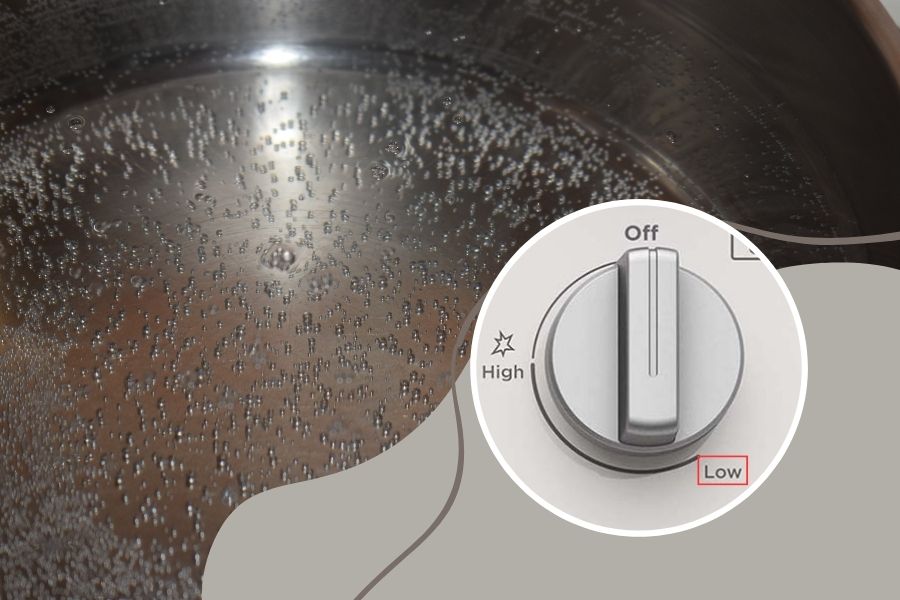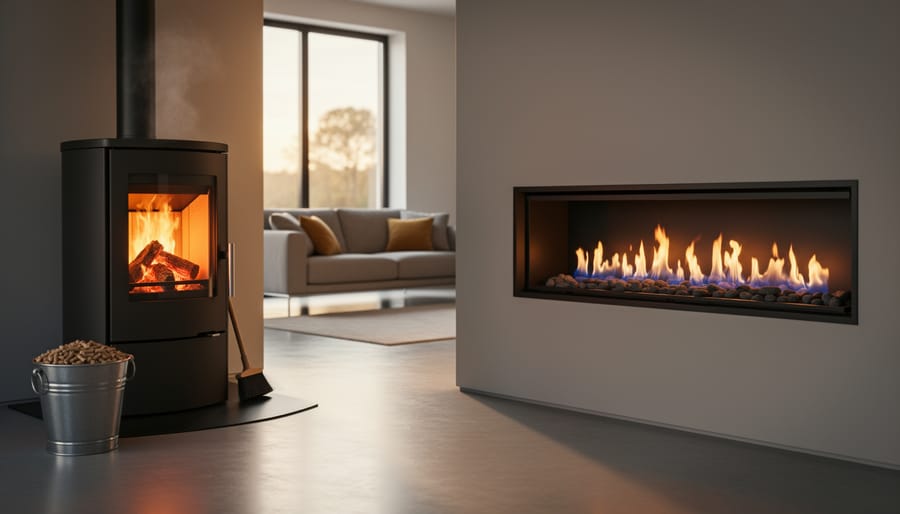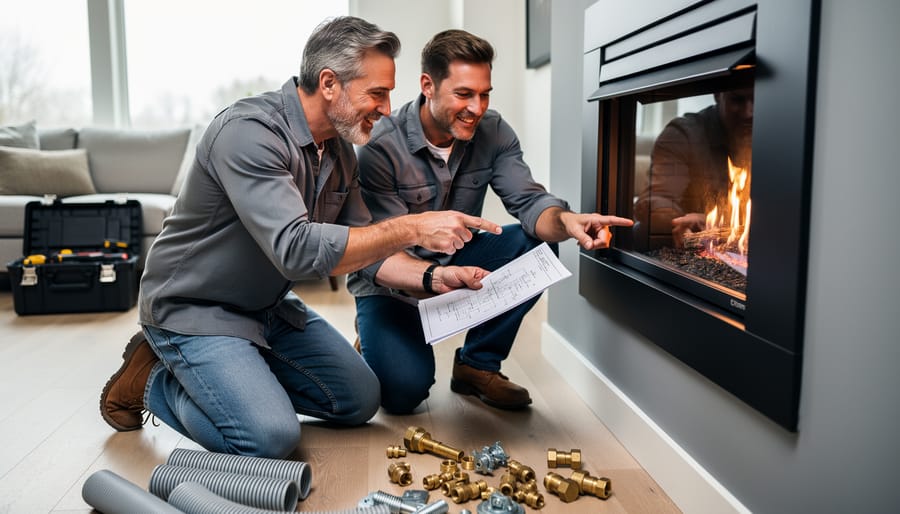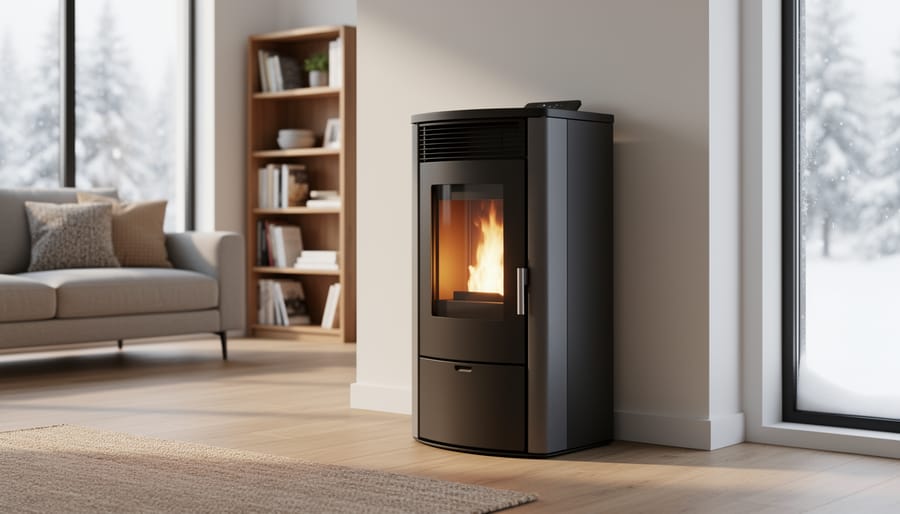When you are simmering, the goal is to maintain a very low temperature. Simmering involves gentle heat and long cooking times so the results will be tender and flavorful. You can simmer on the stovetop or in the oven.
Simmering involves bringing a liquid to the point of being below boiling. You’ll notice several tiny bubbles rising into the air. If the pot begins to boil, you can turn the heat down until you can keep the gentle bubbling.
This effective cooking method could mean the difference between burnt and fluffy rice and soft and hard stew meat.
Simmering

Simmering refers to a specific temperature range. It’s an easy technique for cooking vegetables, soup, stews, or even big slices of meat. In the culinary field, simmering something is cooking it in liquid heated between 180° F to 205° F at sea level.
But the temperature is lower for those at higher altitudes. When the simmering process is complete, bubbles appear and slowly rise to the water’s surface.
When you are simmering, the goal is to maintain a very low temperature. There’s no boiling involved; instead, the liquid is gently bubbling at the surface. If you have a thermometer handy, you can read your cooking temperature by inserting it into the food itself or using it as an indicator on top of your pot.
You can also gauge whether or not your food is simmering by looking for tiny bubbles rising to the surface. This will happen when there’s not enough heat.
It is common to see a recipe instructing you to boil the liquid and lower the temperature to a simmer. This will ensure that the liquid is up to the correct temperature. It is then time to lower the heat and maintain the pot at an amount that allows just a slight bubbling.
Phases of Simmering
The technique of simmering has three phases that are:
- Low Simmering – The simmer is low at a low temperature, and there is little activity in the pot.
- Complete Simmer – The complete simmer stage will see tiny, delicate bubbles forming that try to break up the surface. There are also tiny steam bubbles escaping out of the pot.
- Quick/Rapid Simmer – The stage of a rapid simmer is just a hop and a leap to boiling. Many people describe it as the initial phase of boiling. It takes place when you cook on medium to moderate heat. The simmer stage could be considered an extremely low boil at the point of rapid simmer. The bubbles are still tiny; however, at this point, they are bigger and much faster.
Simmering Involves Gentle Heat
Simmering is a gentle form of cooking. While it’s true that simmering involves more heat than steaming or boiling, it still adds very little to the temperature of your food. Most recipes for stews and soups report that they should be cooked at “low heat” or “gentle boil.”
Low temperatures help prevent food from drying out as much as higher ones. Heat causes the water in foods like meat and vegetables to evaporate—which means less flavor in your dish! It also makes them more likely to burn when you have high heat on for long periods—which is never fun (or tasty).
Simmering on the Stovetop or in the Oven

When it comes to simmering, you have a choice of cooking methods. You can opt for the traditional stovetop or the newer oven-based method.
Stovetop simmering is more common and accessible because you don’t have to worry about monitoring your food for any length or having an exact temperature. However, depending on your stove and pot, it may be challenging to get truly low heat when you need it most.
Oven-based simmering is less common but more energy efficient and precise—you can use low heat precisely as needed with no chance of burning your food in a quick moment while stirring or tasting (as long as you don’t forget about it).
Is Simmer Lower Than Low?
This is the most commonly asked question.
Simmer is a cooking method of boiling food items in hot fluids kept at or below that boiling mark. The method is distinguished by tiny, soft bubbles occasionally breaking through the surface.
A recipe that tells you to “bring to simmer ” specifically asks you to cook over medium-low heat.
This is because simmer is not low or medium heat. It is also not less than the low.
So, if you think about whether a simmer has a lower temperature than a high one, there is no answer. Simmer cannot be higher than medium heat but is definitely not lower than low heat, or “low” as it’s marked on certain stoves.
Is Simmer Identical to a Low?
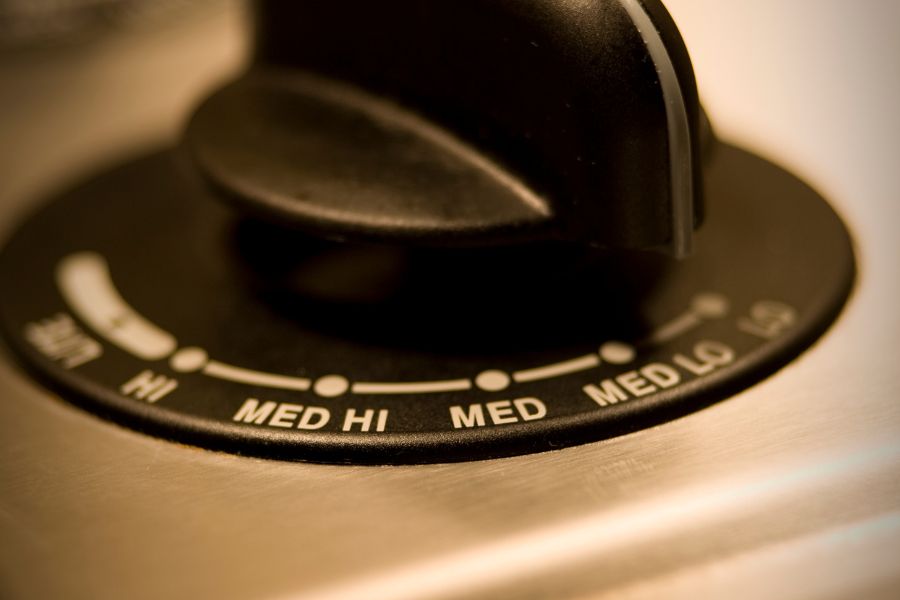
The main thing to keep in mind to be aware of is that different stoves heat differently. Certain stoves are more efficient than others. Simmer could be similar to low on one stove, but it’s not the case for other types of stoves.
According to the recipe, an even simmer could be required to bring the food to a boil and then reduce the source of heat to a low temperature. Some recipes require a quick simmer. This is when you cook your food at a low or moderate temperature.
If a recipe requires the second simmering method, it may take a long time to cook. Also, because lower temperatures are less likely to bring the recipe to the point of boiling, the risks of cooking it too long are very high.
What Is the Simmer Setting on Your Stove?
Some stove makers have clearly marked the simmer settings on their stoves. In such a situation, when a recipe calls for simmering, all you need to do is change the knob for the temperature to the simmer setting that is built into the stove.
However, most of the stoves used in most households do not have the designated temperature setting. This makes identifying the simmer’s exact temperature tricky, leaving you plenty of guesswork. The stoves also operate differently. A simmer can be low on one stove and moderate heat on another. You’ll need to alter the temperature frequently.
A simmer is a moderately low temperature. When you are ready to bring it back to simmer, move the control knob for heat to medium-low heat, which is in between lower temperatures and moderate heat settings.
Here are some tips for locating simmer settings on your stove:
- On a stovetop with the numbers 1 through 9, the simmer setting is between 3 and 4. It’s a medium low-heat setting because it’s between 1, which means low heat, and 5, which is medium heat.
- When your cooktop has 6 numerals on the knob for heat control, the temperature setting for simmering is 2.
- One thing that can come to your aid during simmering is knowledge of the characteristics of simmering. This will let you know when to add water or reduce the temperature.
- A successful simmer is distinguished by tiny, soft bubbles breaking through the surface every two to three seconds. There are also tiny steam bubbles that release from the pan.
Benefits of Simmering
- It is a versatile method that will yield tasty outcomes at any time.
- The added ingredients are absorbed into the liquid as the soup or sauce simmers. Beans and vegetables soak up seasoned liquid and add some flavor to the stew. Additionally, there is a chance that boiling liquid is evaporated, thus concentrating and intensifying the flavors.
- Simmered food items are more soft and palatable.
- Simmering involves cooking food items in the liquid they’re served with and preserving the nutritional value of the food. Also, simmering your food with apple cider soup or other aromatics can be an ideal way to keep the extra calories from fats, butter, and oils from your meals.
Poaching vs. Simmering
Although most home cooks may have only had the experience of poaching to make eggs, poaching can also be employed to cook other meals. A simmer may be the best way to cook something, but it is too hot.
Poaching, in contrast, is a less agitated method using temperatures ranging from that range from 140° F up to 180° F. When you cook at this point, you notice tiny bubbles appearing on the surface of your pan, but there is no bubbling activity. This is why poaching helps cook delicate food items, such as eggs, that would break in the event of excessive stirring.
Boiling vs. Simmering
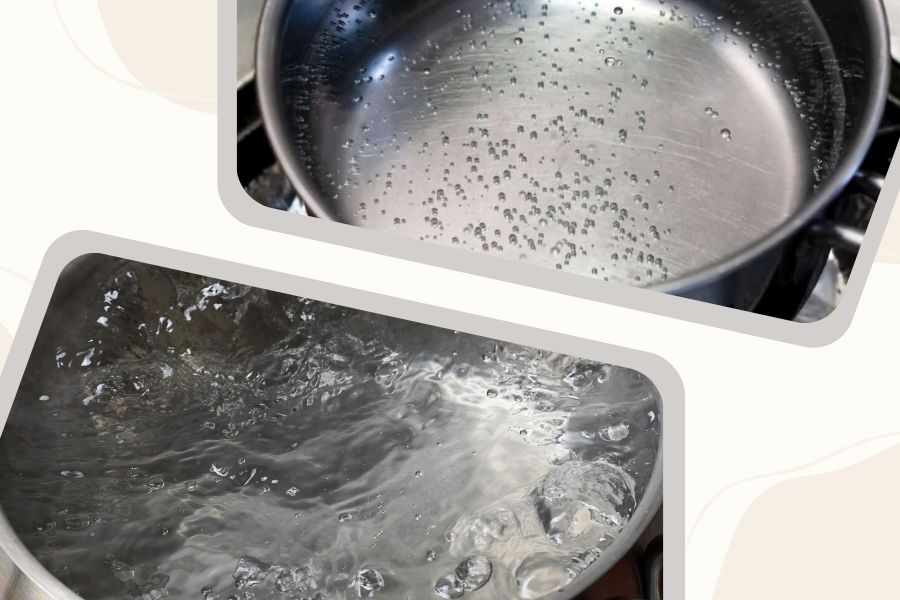
The temperature difference between boiling and a simmer is only one degree, but they certainly differ! The most important thing to remember is that the bubbling bubbles that occur in boiling move the food around significantly, and a simmer does not require that degree of motion.
Tips to Maintain a Simmer
Simmering can be challenging at first, and you will likely be spending much time adjusting the temperature. Stovetops can be a bit tense, too. It’s possible to tweak the heat to keep the liquid in the place you’d like it to be or employ a flame tamer to control it.
Be aware of things, and do not turn your back towards the pot until you are sure the simmer is going on steadily.
- Adding liquid, such as cooking broth, will allow you to cool the cooking pot, but it can also cool it down.
- Covering the pot for several minutes will allow you to bring the pot up to temperature without adding a flame source.
- If the pot is too hot, turn it off towards the other side of the stove or provide it with a couple of stirrings for a larger surface before cooling down.
- A ring that tames flames could aid a complex burner in maintaining the same temperature.
Simmering Focus on Maintaining a Gentle Heat
When you simmer, you should focus on maintaining a gentle heat. As the name suggests, boiling is not the goal here. If the water boils, it will evaporate out of your pot and leave you with less liquid at the end than when you started.
One way to avoid boiling is to use a low heat setting on your stovetop or in your oven. Don’t let any part of the surface of your pot get too hot; if it does, move it away from that zone as soon as possible so it doesn’t continue cooking at high temperatures until all its moisture evaporates into thin air!
Another way to prevent boiling while simmering is by not stirring too vigorously or often—just enough so that everything gets mixed without making bubbles appear on top (and then popping).
You also don’t want anything sticking directly onto any part of your vessel (like meat pieces) since this will increase their exposed surface area, which can cause them to burn faster than other pieces in there!
Finally, make sure there’s plenty of space between each thing before covering up – otherwise, condensation will form inside instead!!
FAQ
Does Simmer Mean Low Heat?
Simmering generally refers to cooking food at a low and gentle heat, typically below the boiling point. This method is often used for soups, stews, and sauces to allow flavors to meld together and cook slowly without overcooking or burning ingredients. Maintaining the simmering temperature throughout cooking is important to ensure the dish is cooked properly and evenly. In summary, simmering does indeed mean cooking at low heat.
Conclusion
Simmering is a helpful cooking technique that can help you make delicious food. It’s important to remember that simmering involves gentle heat, so don’t turn the burner on too high or leave it on for too long!

